Week 10:
Regrettably, this super cool project came at a time when food was the last thing on my mind. For two weeks, I was in bed with fever and hardly any appetite. The next week after that, I was in the hospital, recovering, hooked up to an IV, gaining some appetite but being fed a healthy arrangement of hospital food three times a day. It was like being on an airplane for a week straight. With every meal came these funny little slips of paper. I saved a few, but not one for every meal I was there. Below are examples of breakfast, lunch, and dinner.
I found these papers quite charming and I hoped to do something with them, which is why I suppose I kept them. My initial idea was to use them as some kind of recipe/menu for my meals for a few days. But aside from it being hard to go out and obtain all these little snacks, I thought it would be a horrible waste, since now that I’m out of the hospital I’m quite enjoying eating whatever I choose.
So, I took inspiration from Aislinn Thomas’ Pancakes, and stacked them:

In doing this, I stumbled on a fairly good representation of what the last few weeks looked like to me: an overlay of semi-transparent days and meals all congealing into a hardly legible single piece of paper.
_____________________________________________________
Week 9:
Aislinn Thomas’ A Stack of Pancakes to hold up the Ceiling (2015)
I think a lot of the best artworks fall into the section of art which some people complain about that “that’s not art, I could have done that”. Thomas’ pancakes definitely falls in that category. Her pancake tower is simple, and exists without reasoning. I find it funny that she did not even consider her reason for doing the work until her partner asked her if she did it because her ceiling had previously caved in, at which point she said maybe I did do it because of that… It speaks to the magic of art, and the way it seems to reach in past your conscious mind to bring you things you didn’t even know you were thinking about. Yeah, I could have made so many pancakes that I stacked them to my ceiling and let them start rotting, but I wouldn’t have and I didn’t.
_____________________________________________________
Week 8:
Bread for me has always been a breakfast food, and meal in its own. For whatever reason, if given a slice of bread on the side of a meal, say for lunch or dinner, I never quite got into the habit of eating them together; using the bread to wipe off the leftover sauces on the plate the way I saw my mom do. When I was a younger, picky eater, bread was the only thing I would eat on vacation. We would be in the Dominican Republic, with a full buffet of delicious cooked food, and I would grab a bun and some butter.
A more meaningful relationship I and my family have to bread is to a sweet Romanian bread called Cozonac. My mom makes it twice a year: on her late father’s birthday, and for the holidays. Making cozonac takes a full day of work of mixing and flattening and rising, then my mom braids three strands of dough and puts them into a pan to bake. Normally if she’s making it, she’ll make enough dough for 3 loaves. The result is a sweet bread with cocoa, nut, and raisin swirls throughout. I grew up eating cozonac and look forward to it every year.
Bread has never been an addition to my meals, but something I would eat alone or not at all, so I wouldn’t consider it a comfort food nor the center of a meal. I think my comfort food is spaghetti, with butter and feta cheese, which I suppose is similar to bread in composition.
I think baking, like knitting, is an old hobby that appealed to people in the pandemic for several reasons. For one, it is a skill, and something you can work to improve on, which sets up a sort of psychological ‘ladder’ for one to climb. Next, it takes up a lot of time, which is important since we all have nothing but time on our hands. And lastly, when you’re done, you have something to show from it: something you can tangibly grab and consume as part of your day. In short, pandemic baking seems to have become so popular because of the way it takes up so much time, without feeling like that time was wasted.
_____________________________________________________
Week 7:
Video link: https://youtu.be/M8cLKxICzDU
For the video art, I was inspired in reading Castro’s article and the way they spoke on how Zoom affects our days. Making another appearance this semester, I asked my partner to stay on Zoom with me for the first few hours of our day, despite us being in the same room. We stayed muted and I told him to close the tab so he could focus on doing his work, and I did the same. Castro speaks about having this ‘immediate’ or sometimes laggy feedback of ourselves over Zoom – we can sometimes hear our voices bounce back, and we can always see ourselves in the little square at the bottom. In meetings, our attention, already so weirdly divided, is also in part taken up by our own mirror-image which looks back at us through the screen.
My original plan was to create two videos following the exact same format, but to see what happens if we kept the tabs open rather than closing them. The video posted was around 2-3 hours, sped up and condensed into a 12 minute video (arbitrarily chosen, as I played with the playback speed to find something not too slow but not too fast). I meant for the subject to be mine/my partner’s attention; which you can see through darting eyes across screens, or times when the screen gets no attention at all. Unfortunately, I got sick shortly after filming this video so the second iteration didn’t come to be.
I had hoped to see a difference between the two, noticeable only to those who have been immersed in Zoom for the past few months. I wondered if, while having an image of myself on the screen, the little changes in behaviour (i.e. looking often at myself, adjustment of hair/clothes) would read on the video as purposeful, or if it wouldn’t even change the outcome.
NOTES:
- Pipilloti Rist – Be Nice To Me (Flatten 04) 2008: The insistent, almost literal “in your face” way in which the video is filmed is hard not to immediately notice. It’s gross, uncomfortable, and weirdly real. By using the glass in front of the camera, Rist affects the viewers by making us feel as though it is our own eyeballs that she’s rubbing against. We all know the feeling of pushing, pulling skin; so Rist puts us in a space where we are viewers of the act but also know exactly how it feels to be in her situation.
- Suck Teeth Compositions: What strikes me is the semi-musical compositions that the artist probably spent a long time considering and editing in succession. I believe as a viewer these videos affect you in one of two ways, and it is extremely dependent on your race and upbringing. On one hand, as you watch you feel as if you’re on the receiving end of the sounds. Even though you know you’re watching a video of strangers, you can’t help but take it personally. On the other, (I imagine, if you are part of the black community) the videos are like a dictionary of sounds: you may be able to dissect each sound and place it as ‘disdain’ or ‘annoyance’ and so on, with each sound being different to the “trained ear”. The videos present a form of language that doesn’t need words to be understood.
_____________________________________________________
Week 6:

_____________________________________________________
Week 4:
I’ve been staying with my boyfriend for the past two months and a bit. We only leave the house to go grocery shopping, or to walk around the neighbourhood when we find time. Everyday, we wake up to the alarm ringing at 8:00 AM, then it’s head underwater until our work for the day is done. Write some notes, take a small break. Finish that assignment, cause the next one is due soon. Is it already 2:00? We should probably eat. Then back to work. Suddenly it’s 8:00 PM, 12 hours have passed, so we start to power down. Shower, climb into bed, “goodnight”, “goodnight”, and we start over again the next day.
I chose to take my two videos portraits of us in our everyday spots. The concept of Adad Hannah’s video portrait fit in quite nicely with this moment, since we’re stuck in this moment; for now. Like a lot of his distance portraits of strangers reflect, society as a whole is stuck holding its breath until the ‘video’ is over and we can move again, but we don’t know when that’ll be. My partner and I are stuck in the same way as everyone else is right now, and as students, we’re stuck in our daily schedule as well. Not much changes from day-to-day, maybe the clothes and the content of the work, but suddenly it’s nearing the end of October when we could’ve sworn we only just hit September.
_____________________________________________________


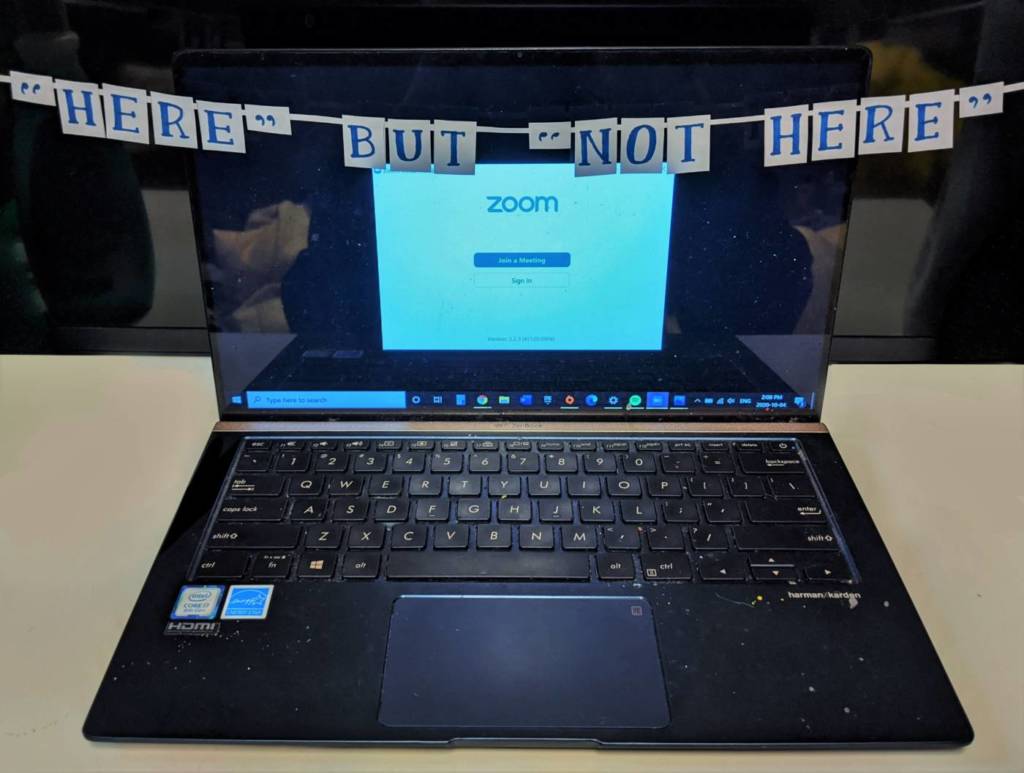
For my banner, I found that a lot of the phrases/words I put together from the article related to our current situation, so I decided to go with one of those. The words I found play off at least two meaning of “here”. Firstly – not that we do it much in university anymore, but – is the use of “here” as an answer for role call in school. Second is the physical use of the word. We are present in classes, but we are not in classes.
_____________________________________________________
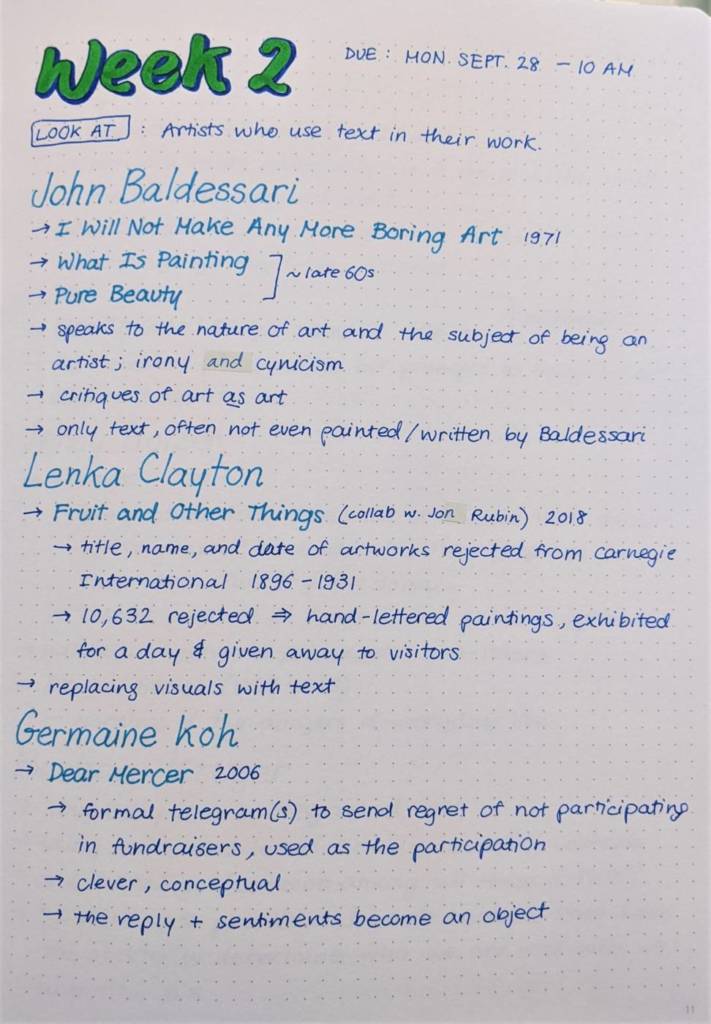
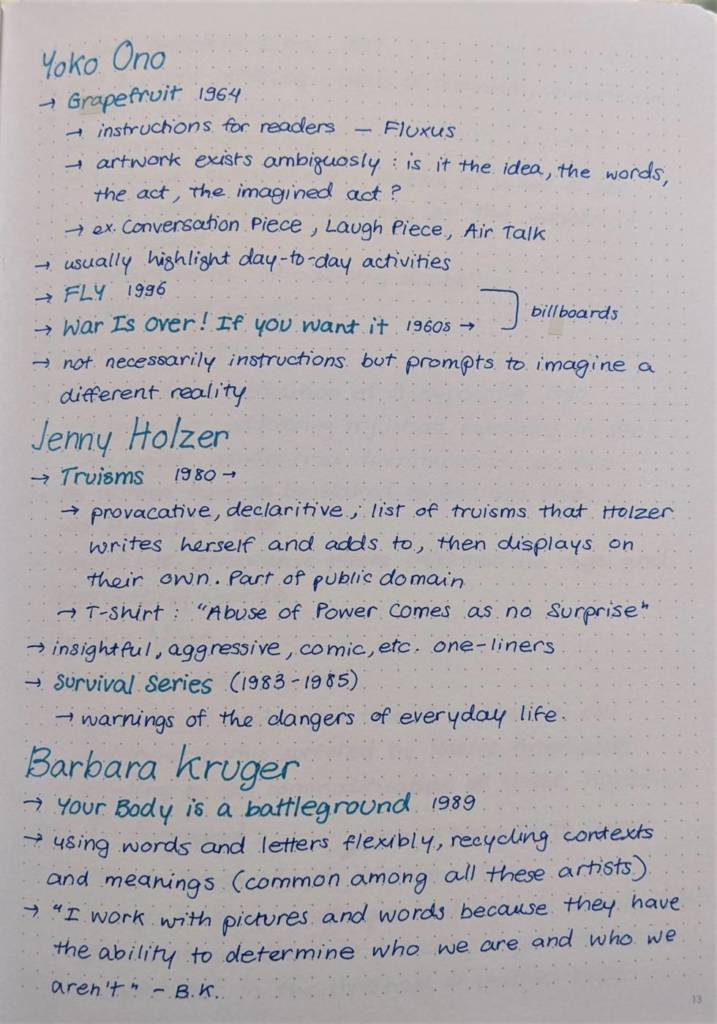
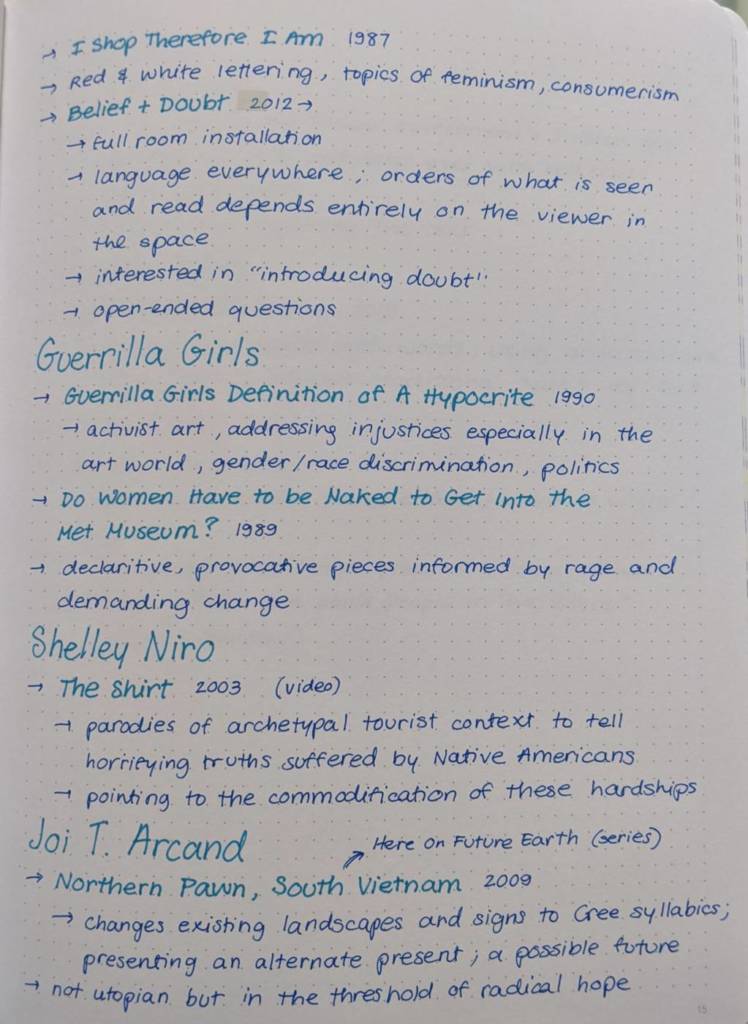
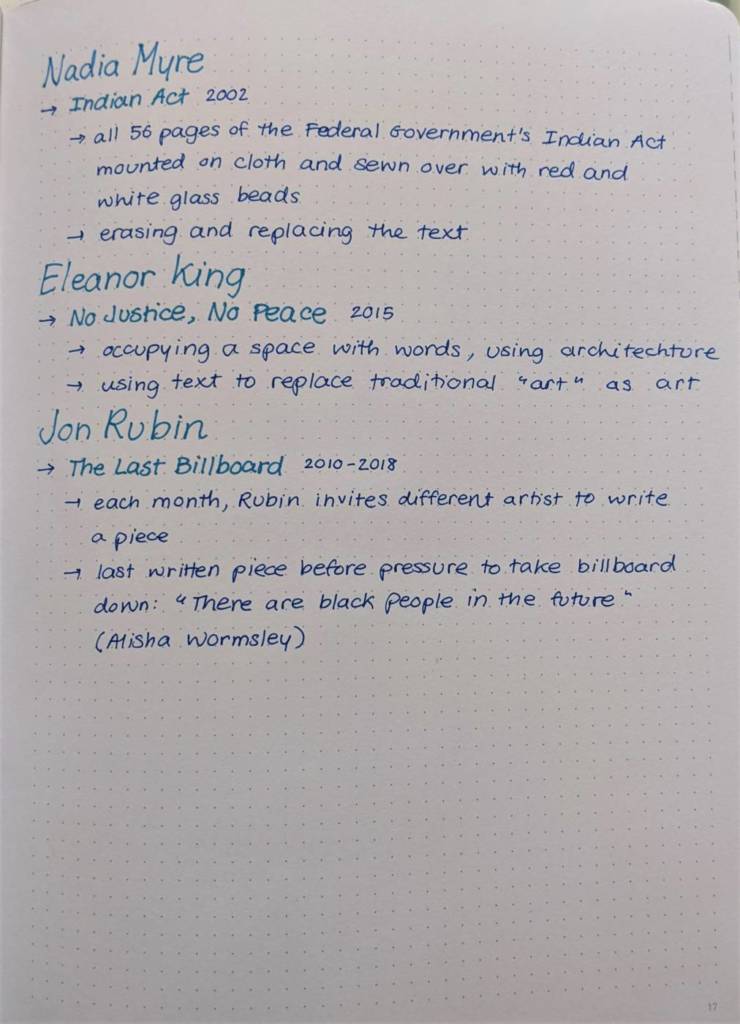
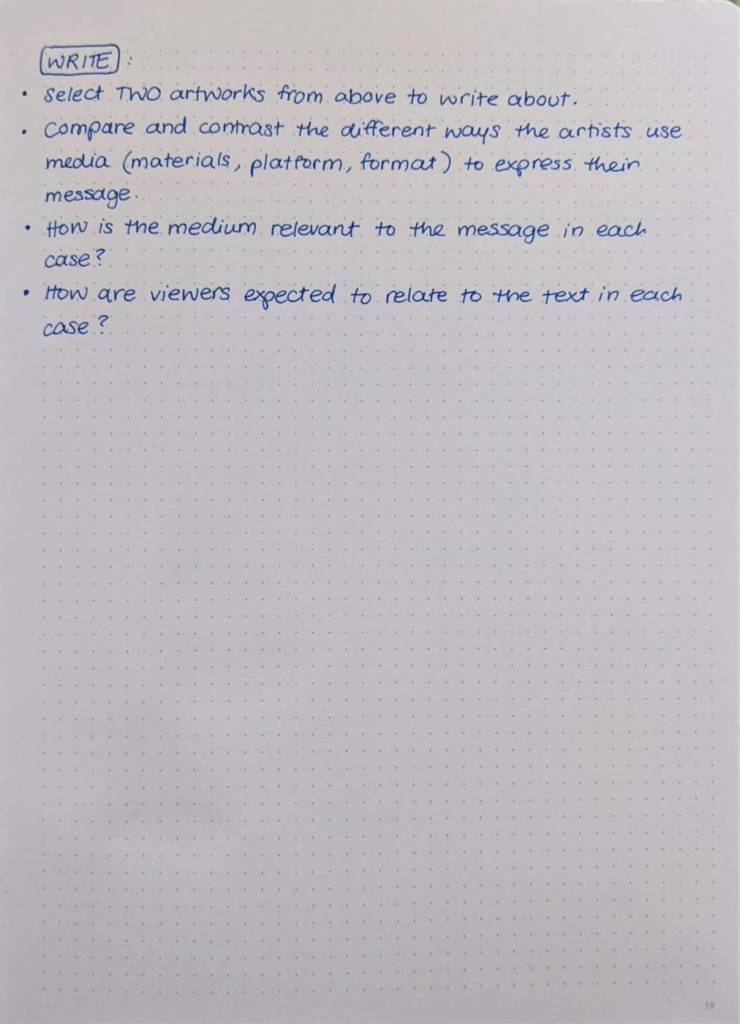
Nadia Myre’s Indian Act (2002) used traditional Native American techniques of beading to erase all 56 pages of the Federal Government’s Indian Act. The pages were mounted onto cloth to facilitate the beading process. The page is beaded in red and any “words” appear as white beads, leaving behind a facsimile of a document, where words are just lines of colour.
Lenka Clayton’s (collab. with Jon Rubin) Fruit and Other Things (2018) project took the written records of rejected artworks from the Carnegie International (10,632 artworks) and turned each into a hand-lettered text painting. Each painting was exhibited for a day, then given away to visitors.
In both cases, Clayton and Myre are using documents as the basis of their art. In Clayton’s case, the documents seem to be a serendipitous discovery of titles with a certain history; whereas for Myre, the Indian Act holds a great amount of weight and importance to her and her community.
Clayton’s method of work takes the idea of an image, shortened into a title, and transformed so that the words themselves become the artwork. To viewers (or readers), the imagery behind the title can only be imagined; bringing to mind questions of the visual importance of art. What are we missing when we read this title without an image to accompany it? Would it have been better with its image? Does that even matter?
Myre goes the opposite direction. In her case, these words that have been written so long ago, about her people, and have caused so much destruction to their way of living, need to be erased. Using traditional beading, the Indian Act is transformed into a piece of Native American art. Myre utilizes irony as part of her message, and allows (or hopes) for a sort of healing process to begin, whether within herself or within her community.
_____________________________________________________
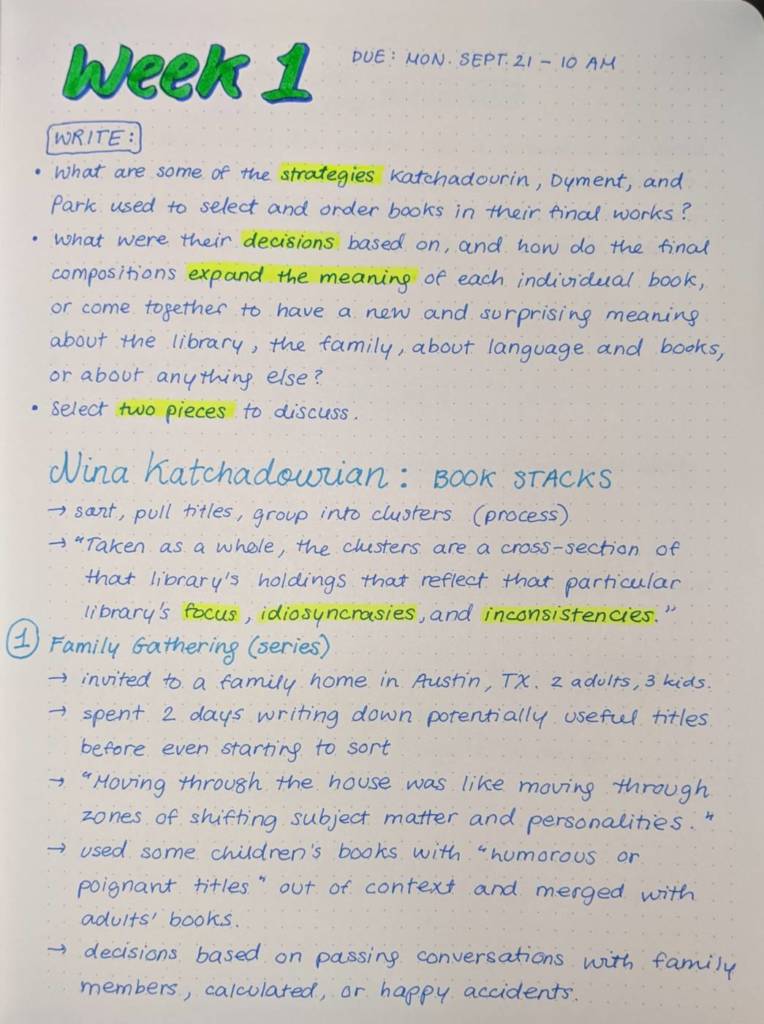
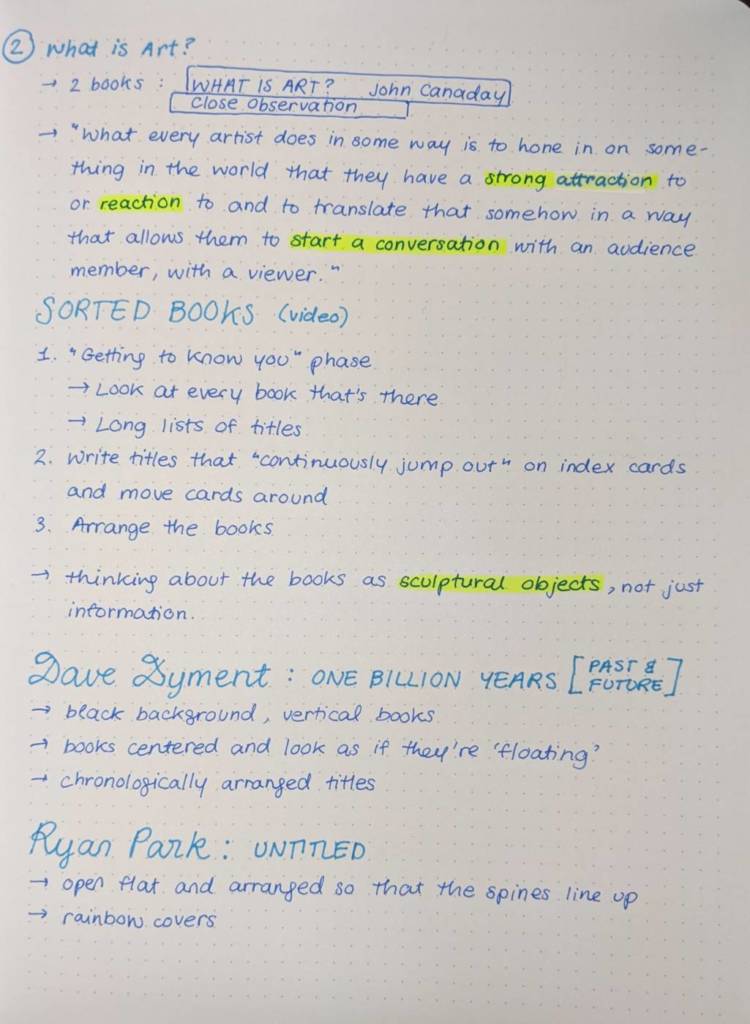
Weekly Assignment 1:

I have a handful of books in my student house in Guelph, which I use for various reasons. There are many picture/encyclopedia-type books, art books, poetry books, and fiction books which I’ve read so many time their spines are cracked. I found it hard to look for titles to string together into coherent messages, so rather than look for “inconsistencies”, as Katchadourian did, I found a consistency. Nearly all my books start with the word “The” (which I doubt is uncommon among book collections), so I arranged them so each “the” lines up down the middle. Taking inspiration from Dyment, I decided to block out the background with black.

The titles of my rather small collection of books did not bring me much further inspiration, so I stacked all paperback books and lined them up flush left to create this image, which ended up being a nice composition of the various horizontal topographies of my books.
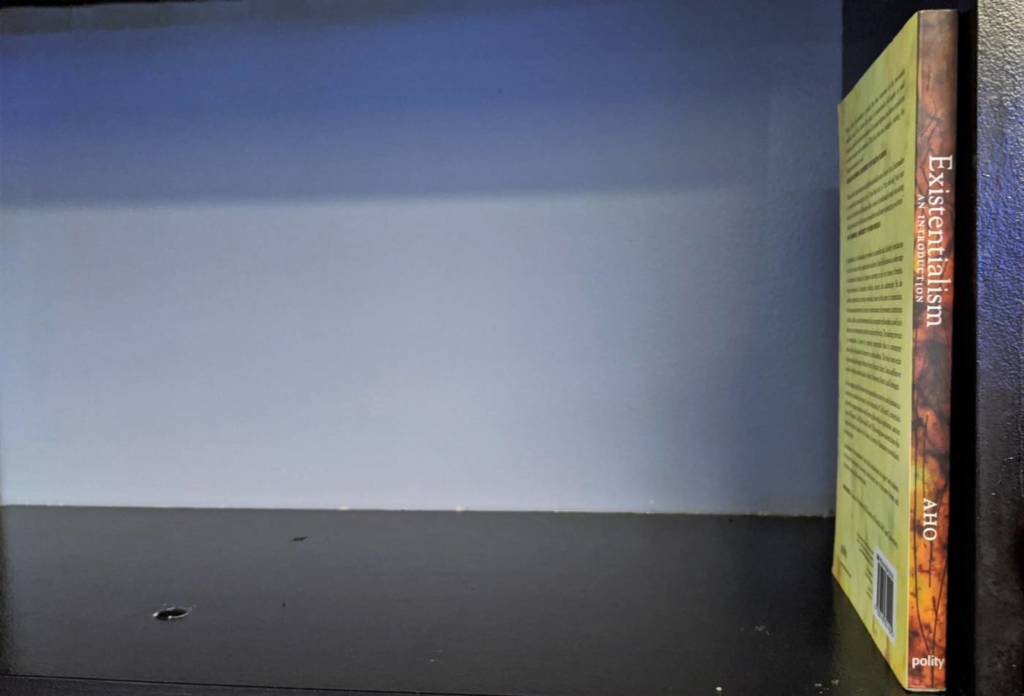
Trying to go in another direction again with my third image, I wanted to make use of space/emptiness. Ripped straight from google, Existentialism “explores the nature of existence by emphasizing experience of the human subject.” In this image, the book is a placeholder for the human subject; metaphorically alone on the shelf, and all meaning must be created by itself.
_____________________________________________________

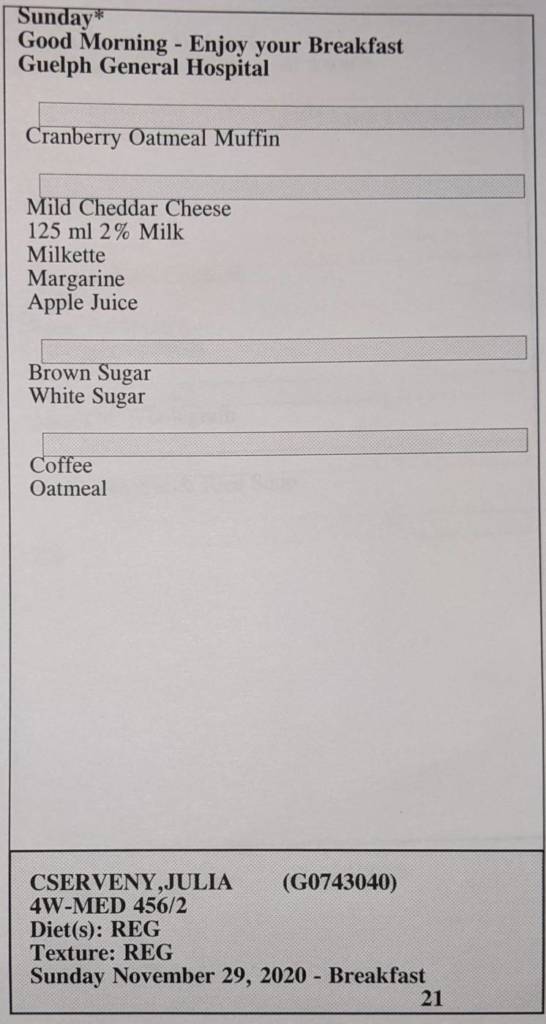
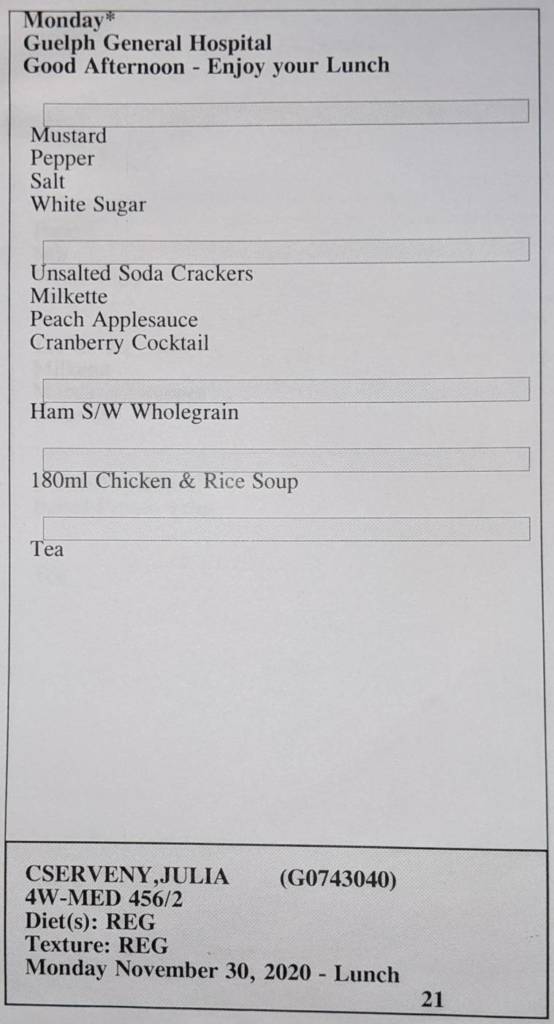
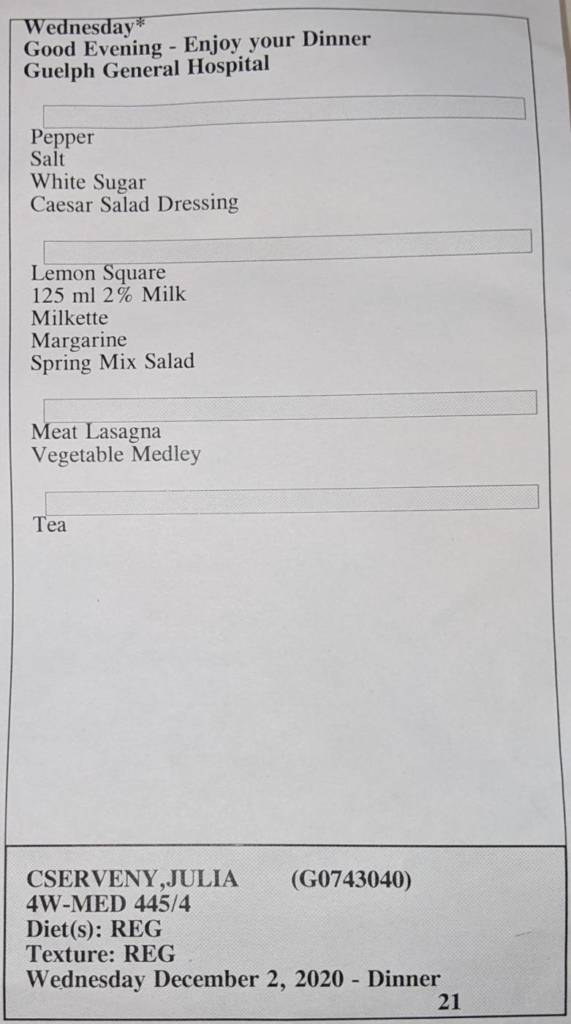
Julia:
Week 1:
Katchadourian notes complete and thoughtful,
plenty of evidence of curiosity and full engagement with material
and level of understanding of critical ideas at play
3 Book stack images complete – I especially like the Existential nothingness one – and original approaches with the paper edge sides of the books, show understanding of conceptual ideas at play,
and evidence of technical investment and effort.
Week 2:
Notes on two text works complete, and I like your handwritten notes – that is how we remember stuff! Shows evidence of curiosity and full engagement with material
Week 3:
Text banner exercise and description are good – I see the logic and application to aspects of the pandemic moment – maybe the text could be in a more natural place, like above your workstation? Doesn’t have to be right on a zoom screen – keep playing with a context that makes sense, and then words that are surprising. Good thinking on this one, and understanding of conceptual ideas at play,
evidence of technical investment and effort.
Week 4:
Two Social Distancing portrait videos complete – I wasn’t sure at first but after reading the thoughtful and honest notes and descriptions I see how you follow the spirit of Adad Hannah’s works – and the images are banal but that’s the point… I like your messy desk – thanks for showing something real!
Very good attendance and engagement and participation in live exercises – try to have work done for class time and it’s great to hear from you in discussions.
It’s great having you in the class Julia! Congratulations on completing all this work, Diane
If you would like to talk with me about your work in progress, readings, exercises, one-on-one comments on your work, and grades – send me an email in the morning to book a 15 minute appointment during my office hours: Thursdays 1:30-3
And you can show up to a zoom meeting with Nathan anytime during these hours to ask your questions, and get tech support for using software and finishing your projects:
Mondays and Thursdays 1-4pm